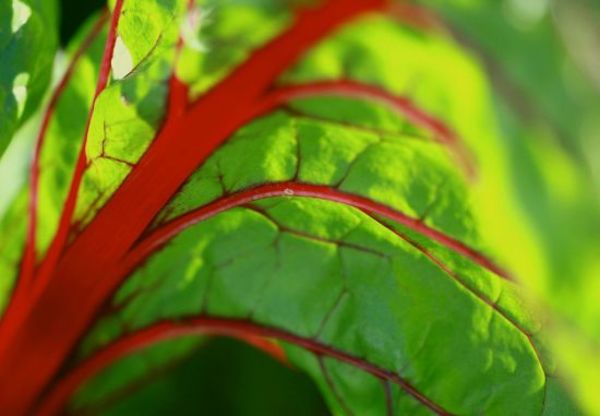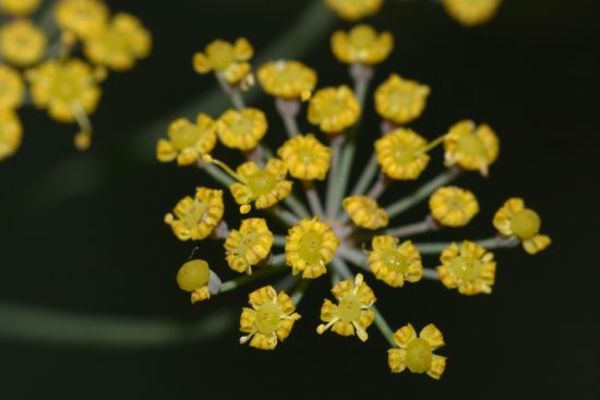Ooh-La-La! 8 Vegetables to Plant for a Truly French Garden

Plant yourself an edible garden this season that feeds you in style–French style, that is. From remoulade to hollandaise and tarts to crepes, every French-inspired menu you’ve got will benefit from these eight essential French garden fruits and veggies. Transform the ordinary into le magnifique!
ALPINE STRAWBERRIES
You may know them as “wild strawberries” or as their formal name, Frageria vesca. These small, bright red strawberries grow naturally in all sorts of landscapes—in woods, along hillsides, in forests, along clearings, and even speckled on trails or sidewalks. They also happen to make a lovely garden addition for your planted gardenscape or your “edible lawn.” Get tips on growing here.
Alpine strawberries mold quickly, especially once picked, so wash them immediately and chill until ready to use—within the day preferred. These sweet, tiny berries are a staple for many a sweet French treat—use them in crepe fillings, fresh fruit compotes, homemade jams and jellies, and in pan sauces. Simply fold chopped alpine strawberries into freshly whipped cream for an instant French dessert.

Image: Lightsurgery
ARTICHOKES
Artichokes are a handful to prep and cook with, but they aren’t nearly so difficult to grow. These tall, stunning vegetables can grow in almost any climate in the States (except areas where intense heat juts doesn’t let up, such as Florida). Get tips on growing here.
In French cuisine, artichokes and their hearts are served warm with hollandaise sauce, butter, mayonnaise, or lemon sauce—all things warm, bright, and just a bit tangy. Simple is best, as usual in French style—just prepare them properly and let the well-whisked dressing do the rest.

Image: THE Holy Hand Grenade!
ASPARAGUS
Asparagus is a long-living perennial that can produce vegetables for up to 15 years when properly cared for! Give this one a shot for your edible garden and enjoy the benefits for years to come. For a truly French asparagus, opt for the white or purple varieties, which grow the same but produce stunningly gorgeous contrasting colors. Get tips on growing here.
Just like artichokes, well-harvested asparagus needs little preparation to be served à la France. Note, however, that in French cuisine, asparagus is often peeled first—a preparation method that seems off to most Americans, but it removes any potentially stringy outer layer of the stalks, leaving purely soft and sweet asparagus behind for your sauces and butters.

Image: La Grande Farmers’ Market
CELERIAC
Commonly called celery root, celeriac is a gnarly looking, knobby vegetable that can easily scare away small children and the weak-hearted. But don’t let the ugly look of it push you away; this hearty root vegetable is grown all over Europe and in much of the States for its robust growing capability, as well as its surprisingly fragrant, delicate flavor. It’s said to be much easier to grow than celery itself, so if that’s a flavor you enjoy, try starting out with celeriac for easier gardening. Get tips on growing here.
Used raw, celeriac tastes like celery leaves—a bit green, floral, and slightly bitter. Shred or grate it and use raw in salads or slaws with mayonnaise-based dressings. Or chop it and use as any other root vegetable, like potatoes or yams—roast it, mash it, or even French-fry.

Image: Skånska Matupplevelser
CHARD
You probably know it as “Swiss chard,” but chard is actually a staple in French cuisine. There are several varieties to try growing in your garden, including “Lucullus,” “Fordhook Giant,” “Ruby Chard,” and “Rhubarb Chard.” It’s relatively easy to grow, provided it can get a bit of cool weather, and it gives any garden lovely streaks of yellow, pink, purple, and red (found in its stalks). Get tips on growing here.
French cuisine calls on chard like Italian cuisine calls on spinach, or like Americans and … lettuce? Small, young chard leaves can be used raw in salads—just slice them finely like you would basil leaves, and toss with lots of fresh herbs and your fave dressing. Use in place of spinach in virtually any recipe for a French touch—in soups, stews, casseroles, and egg dishes.

Image: daveeza
CUCUMBERS
Most American gardens already have cucumber growing in them—cucumbers are just as much a part of our cultural cuisine as with French. In France, however, they don’t just grow the larger “English cucumbers” we are accustomed to; they also grow and eat the smaller cornichons. Cucumbers prefer rich, fertile soils to grow in, and once they get started, they are quick to produce. Get tips on growing here.
French preparation of cucumbers is usually to slice them up and eat them raw, whether dipped in mayonnaise- and yogurt-based sauces or added to salads. The smaller cornichons are often pickled and used in pates, served with small toasts and noshing platters.

Image: Laurelville Mennonite Church Center
FENNEL
Fennel grows wild all over much of the West Coast, but it also makes a fragrant and attractive to any home garden. Growing tall with feathery fronds and outbursts of petite yellow flowers, fennel plants can be used for culinary and medicinal purposes—plus, you can use the entire plant (fronds, stalks, and bulb) in your recipes. Get tips on growing here.
The French have no problem using fennel in just about any meal throughout the day. Taking advantage of the vegetables sweet, licorice-like flavor, they enjoy it seared in an oiled skillet, braised with balsamic or wine, or added to virtually any French soup or stew. It’s often served gratin-style with potatoes, root vegetables and cheeses, or baked with tomatoes, garlic, and ample olive oil.

Image: Deanster1983
LEEKS
Leeks are used in French cuisine like yellow onions are used in standard American cuisine. They’re in the same family as garlic and onions, and their growing conditions are about the same—they like damp, cooler soil with richness and fertility. Get tips on growing here.
Use leeks in place of onions in any of your recipes for a more delicate flavor with a hint of sweetness. Leeks don’t have the same raw bite as onions or garlic, and so they are often eaten raw in French cuisine, served alongside creamy sauces and herb-infused butters. Caramelize them and use in pies, casseroles, and tarts for simply heavenly results.

Image: lindsayscott72
Stay in touch with Kimberley on Twitter @GreenGourmetKim
Main image: Skånska Matupplevelser

